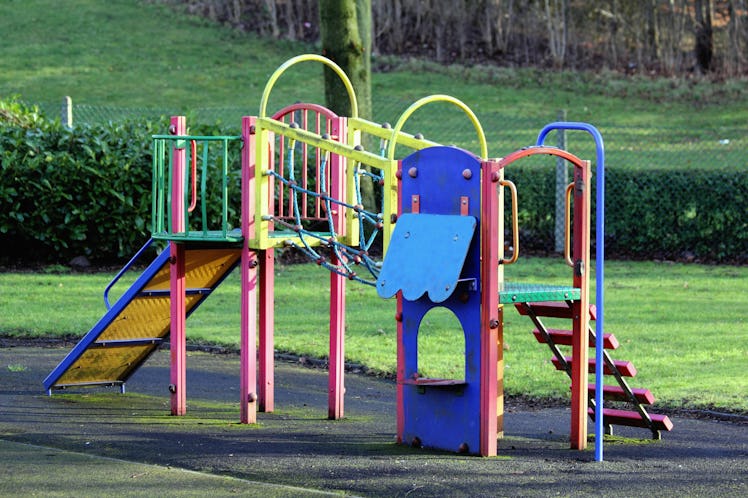The Hidden Forces Shaping Your Kid’s Favorite Playground According To PlaygroundEquipment.com
Playgrounds aren't just slides and swings—discover how they're designed to boost your kid's growth and learning.

Think back to your childhood and your favorite playground. Now, fast forward to today and your child’s go-to playground. It probably looks and feels different from the one you remember, all because of the latest updates, changes, and trends in the commercial playground industry.
If you’re not knee-deep in the commercial playground field, you probably haven’t been aware of the hidden forces shaping your family’s favorite outdoor play spot. Yet it’s worth knowing about those forces and the way they can affect your child’s social, emotional, and physical development. That way, you can better evaluate the impact that each playground you visit has on your youngster’s upbringing.
Design Based On Healthy Child Psychology
Though you might think of a playground as a collection of random equipment and structures, the most innovative playgrounds are arranged to encourage brain activity and growth. A piece from PlaygroundEquipment.com, one of the nation’s leading commercial playground sellers, explains this practice in more detail.
As a PlaygroundEquipment.com article notes, the act of playing helps infants, toddlers, and children create the neural networks that are necessary for normal growth. When they play, kids learn how to make sense of the world around them. They start to explore, connect, and discover. As they gain more knowledge, they also gain confidence.
This makes it essential for playground designers to outfit play spaces with a “buffet” of equipment types. That’s why you’re likely to notice a wide variety of types of playthings at a well-designed playground.
For example, you may see a raised sandbox, which is a very tactile object that’s visually and kinesthetically stimulating. Yet not all objects will be tactile in the same way. Others may be more focused on physicality and problem-solving, such as an age-appropriate climbing wall. The more varied the equipment at your favorite playground, the more opportunities your child will have to build brain power throughout the years.
Built To Safety Standards
Today’s top playground architects aren’t just given the directive to design play areas. They’re held to safety standards. For instance, PlaygroundEquipment.com says in a post that playgrounds are typically arranged for the needs of visitors who are under age 12 and weigh less than 125 pounds. Additionally, designers construct their playground blueprints based on guidelines set forth by well-known safety organizations. That way, they can be sure that they’re meeting or exceeding the safety needs of all kids and adults who visit the public play locations they design.
How can you make sure that a playground is safe? First, look it over. (Parents have amazing “safety radar” capabilities!) Does the equipment look rusted? Are some pieces broken? Does it seem like some of the equipment is unstable? These may be signs of an older playground that has been neglected over the years. Next, examine the playground for potential hazards. These could be sharp, exposed edges or even uneven walking surfaces.
Adults actively stay on the lookout for safety features like guardrails, for example, on tall equipment in playgrounds. Guardrails protect against preventable falls and injuries — and keep the play moving in the right direction.
Inclusivity And Accessibility For All Kids
There’s no “one size fits all” type of child. They’re all unique, which means they each have different skills, challenges, and ways they experience the world. Accordingly, the most welcoming playgrounds should offer structures and play options that celebrate these unique aspects of all young visitors.
Some of the most common types of accessible equipment pieces include ADA-compliant swings, tunnels wide enough to accommodate assistive devices, and freestanding panels to enable anyone to engage in play. While these pieces can be enjoyed by all, they’re especially appealing to kids who may not be able to enjoy a playground otherwise.
Even if your child doesn’t need special accommodations, you may want to look for a playground that features accessible equipment to introduce your child to kids who are disabled. Having the chance to meet and play with a variety of children will help your child become more open and empathetic. Plus, your child may find a new friend simply because of the inclusive atmosphere of a playground. PlaygroundEquipment.com offers extensive resources on their website about creating these inclusive spaces that foster connection among children of all abilities.
Financial And Related Considerations Influence Design
As you might guess, funding also plays a role in shaping playgrounds. City planners, local municipalities, schools, and private companies rarely have an unlimited amount to spend on playground design and equipment. Nevertheless, financial constraints don’t necessarily mean that a playground can’t feel like an exciting and enchanting place.
Consequently, you shouldn’t necessarily evaluate a playground based on its size. Instead, pay attention to the diversity, safety features, and layout of the general playground. A modestly sized playground can still have a major impact on your child’s positive upbringing.
In addition to financial considerations, playground designers must adhere to any existing federal, state, and local expectations and rules. These regulatory requirements are frequently established for the promotion of safety, but may also be in place due to environmental factors. Again, you might not know about them, but they can affect any playground’s overall ambiance and footprint.
The next time you head with your youngster to a park or playground that’s been planned by experts and constructed with high-quality playground equipment, think of the trip as more than just an everyday outing. Think of it as a chance to see the results of all of the hidden forces that shape playgrounds.
BDG Media newsroom and editorial staff were not involved in the creation of this content.